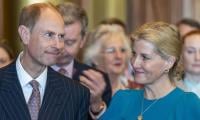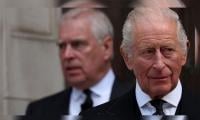The visit
Coming a week after President Barack Obama’s U-turn over the decision to withdraw all US troops from Afghanistan by 2017, Prime Minister Nawaz Sharif’s visit to the White House was thought to hold significance for securing commitments from Pakistan on its relationship with Afghanistan as well as Pakistan’s commitment to
By our correspondents
October 24, 2015
Coming a week after President Barack Obama’s U-turn over the decision to withdraw all US troops from Afghanistan by 2017, Prime Minister Nawaz Sharif’s visit to the White House was thought to hold significance for securing commitments from Pakistan on its relationship with Afghanistan as well as Pakistan’s commitment to combating various militant groups within its territory. It can be argued by critics that nothing very tangible emerged from the important meeting. On the other hand, there was a reiteration of goodwill, the need to work together and other comments and statements which suggested that Islamabad’s relationship with its most crucial ally has not weakened – even if this particular visit did not in any substantial way strengthen it. As expected, after what seemed to be a cordial two-hour marathon meeting between Nawaz and Obama, the joint statement focused on Pakistan’s agreement to take action against all terrorist outfits, including the Haqqani group and the Lashkar-e-Taiba (LeT). The promise that the groups would not be allowed to operate from Pakistani soil suggests that the bulk of the meeting was uni-directional with the US president making demands of PM Nawaz. Combined with a vague statement proposing confidence-building measures along the Line of Control with India and President Obama raising the ‘continuing threat of nuclear terrorism’, it seems Nawaz was made to listen more than talk. There was also no nuclear deal signed – something Pakistan has hoped for a long time, arguing that the civilian use of nuclear energy could greatly help us solve our power crisis.
The US, it is clear, wishes to keep Pakistan by its side and for Islamabad this is good news. The two countries talked about promoting clean energy and development in all areas. Bonds were also built in other areas. US First Lady Michelle Obama hosted a cultural show attended by Pakistan’s First Lady Kulsoom Nawaz and daughter Maryam Nawaz. Perhaps the most solid achievement during the visit by the Pakistan delegation was Michelle Obama’s statement, after meeting Maryam Nawaz, that the Pakistani leadership had promised that education spending in the country would increase from two percent of GDP to four percent by the year 2018. Michelle Obama has also confirmed that the US has agreed to double its spending on education in Pakistan to $70 million. Another key aspect of the PM’s tour was to pitch Pakistan as an investment haven. For international investors, Nawaz highlighted an improved security situation and the China-Pakistan Economic Corridor as new windows of opportunities for investment in Pakistan. While no concrete promises were secured, there was certainly enough interest to suggest investors are looking keenly into the situation in Pakistan. The ‘no comment’ policy that US authorities have taken on the Pakistani dossier on Indian involvement in Pakistan’s internal affairs may be a setback – more so since the Pakistani side’s statements had been very India-centric before the visit –but in truth no one really expected the US to respond in public just yet. This Nawaz visit did show that Washington is clearly in no mood to distance Pakistan for now, especially at a time when it faces challenges from China.
The US, it is clear, wishes to keep Pakistan by its side and for Islamabad this is good news. The two countries talked about promoting clean energy and development in all areas. Bonds were also built in other areas. US First Lady Michelle Obama hosted a cultural show attended by Pakistan’s First Lady Kulsoom Nawaz and daughter Maryam Nawaz. Perhaps the most solid achievement during the visit by the Pakistan delegation was Michelle Obama’s statement, after meeting Maryam Nawaz, that the Pakistani leadership had promised that education spending in the country would increase from two percent of GDP to four percent by the year 2018. Michelle Obama has also confirmed that the US has agreed to double its spending on education in Pakistan to $70 million. Another key aspect of the PM’s tour was to pitch Pakistan as an investment haven. For international investors, Nawaz highlighted an improved security situation and the China-Pakistan Economic Corridor as new windows of opportunities for investment in Pakistan. While no concrete promises were secured, there was certainly enough interest to suggest investors are looking keenly into the situation in Pakistan. The ‘no comment’ policy that US authorities have taken on the Pakistani dossier on Indian involvement in Pakistan’s internal affairs may be a setback – more so since the Pakistani side’s statements had been very India-centric before the visit –but in truth no one really expected the US to respond in public just yet. This Nawaz visit did show that Washington is clearly in no mood to distance Pakistan for now, especially at a time when it faces challenges from China.
-
 Jennifer Aniston, Jim Curtis Face One Major Hurdle In Their Union
Jennifer Aniston, Jim Curtis Face One Major Hurdle In Their Union -
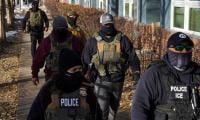 Restaurant Workers Detained After ICE Agents Dine At Minnesota Eatery
Restaurant Workers Detained After ICE Agents Dine At Minnesota Eatery -
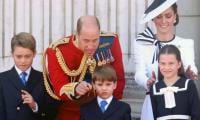 Kate Middleton Reveals Sport She Would Not Play With Prince George
Kate Middleton Reveals Sport She Would Not Play With Prince George -
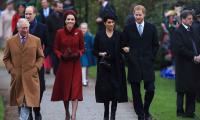 First Poll Since King Charles' Action Against Andrew Reveals Royal Family's Public Standing
First Poll Since King Charles' Action Against Andrew Reveals Royal Family's Public Standing -
 Blake Lively Strengthens Legal Team Ahead Of Justin Baldoni Trial
Blake Lively Strengthens Legal Team Ahead Of Justin Baldoni Trial -
 'Back To School!': Palace Shares Details Of Princess Anne's Latest Engagements
'Back To School!': Palace Shares Details Of Princess Anne's Latest Engagements -
 Paul Mescal Clarifies Acting Break Comment As He Teases Paul McCartney Role
Paul Mescal Clarifies Acting Break Comment As He Teases Paul McCartney Role -
 Kate Middleton's Unexpected Style Of Arrival At Solo Outing Goes Viral
Kate Middleton's Unexpected Style Of Arrival At Solo Outing Goes Viral -
 Why ‘X’ Is Down? Thousands Report Twitter Outage: Here’s What You Can Do
Why ‘X’ Is Down? Thousands Report Twitter Outage: Here’s What You Can Do -
 Florida Man Held After Alleged Nail-scattering On Busy Intersections
Florida Man Held After Alleged Nail-scattering On Busy Intersections -
 Valeria Nicov: Sean Penn's Athletic Girlfriend Raises Eyebrows With Latest Photos
Valeria Nicov: Sean Penn's Athletic Girlfriend Raises Eyebrows With Latest Photos -
 Sharon Stone Lashes Out At Fellow Award Show Attendees After Stealing Accusations
Sharon Stone Lashes Out At Fellow Award Show Attendees After Stealing Accusations -
 Gwyneth Paltrow Reveals Real Reason She Said Yes To 'Marty Supreme'
Gwyneth Paltrow Reveals Real Reason She Said Yes To 'Marty Supreme' -
 King Charles Says He And Queen Camilla Stand With People Of Ukraine
King Charles Says He And Queen Camilla Stand With People Of Ukraine -
 Ben Affleck Argues In Favour Of His Shirtless Scene In 'The Rip'
Ben Affleck Argues In Favour Of His Shirtless Scene In 'The Rip' -
 Mississippi Postal Worker Arrested After Complaints Of Marijuana Odour In Letters
Mississippi Postal Worker Arrested After Complaints Of Marijuana Odour In Letters
